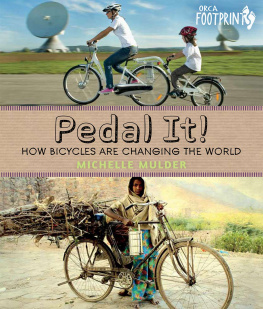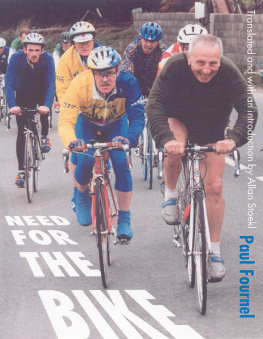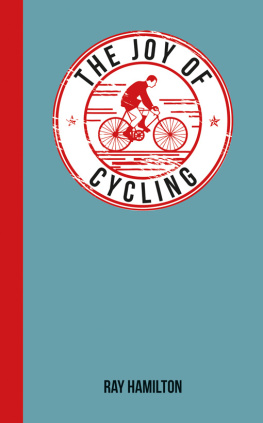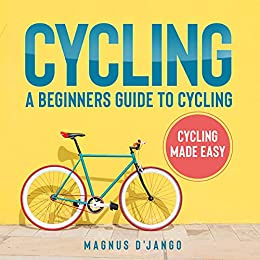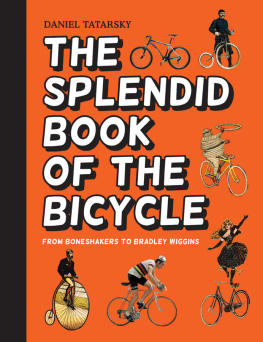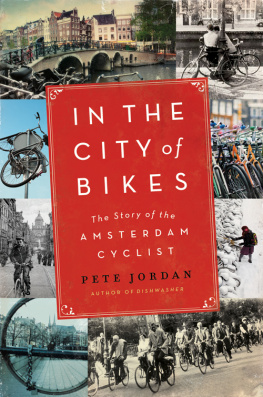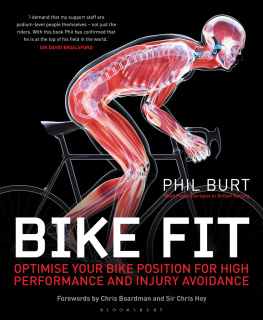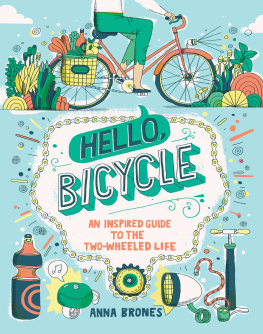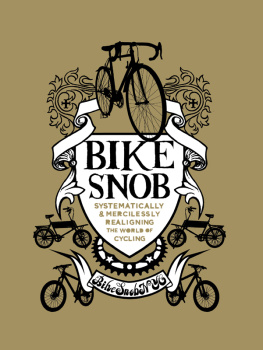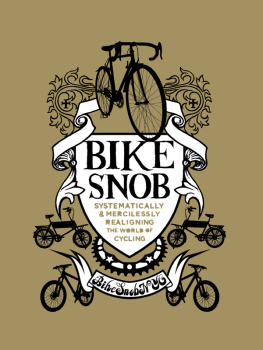INTRODUCTION
Elly Blue & April Streeter
W hy this book?
H ere in the United States, we are in the midst of a massive, ongoing public health crisis, with impacts both personal and political. Increasingly, people are taking to two wheels in response. We are using bicycles, bike infrastructure, and pedal-powered community movements as a sort of thread to stitch up the broken parts of our lives, landscapes, and communities.
Of course, as bicycling grows into a national pastime and an increasingly mainstream mode of transportation, the same debates and narratives are turning up in bike communities as are raging in other placesabout race, and class, and, of course, gender.
Meanwhile, we are also in the middle of what often feels like a national family dinner table argument about womens rights and the role and meaning of gender in our society and economy. Who should do what work, at home and for pay? Who should be responsible for children? How should a persons decision to have childrenor not to do soaffect the other aspects of their lives? The banter often gets silly, but the consequences are very heavy.
On the surface, gender issues have nothing to do with the discourse about cycling (its great for your health, the economy, and the planet!) that we are used to hearing. But on a deeper level, every aspect of the battle over gender roles and womens self-determination is deeply ingrained in how we physically navigate the landscapes around us, and what those landscapes look like. In many places, our choices are constrainedwithout access to a car, we can become trapped in the home. But by using our limited resources on a car, we become trapped in increasingly deep poverty. Without access to reproductive choices, we are trapped with the de facto consequences of that lack of choice.
Meanwhile, the bicycle offers freedom. Damaged as our communities and bodies may be by the world that has been built around us, on a bicycle we can bridge the distances between physical places and break the limits we have set on ourselves. The bicycle is not for everyone, and it is not a solution in itself; but it is undeniably one of the most powerful tools we have available for our liberation.
Who is this book for? Everyone. Most books about bicycling happen to be written by, for, and about men, even if that isnt explicitly spelled out in the marketing materials, but that does not stop many women from reading them, and we aim to be no less inclusive. Most of our contributors identify as women, and the writing and art here describes our lives, our expertise, and the many things you too might experience or want to know about that you simply wont find in other books or articles or even casual conversations about cycling. We aim to shift the tacit assumption that men are the experts, the audience, and the standard when it comes to cycling or anything else. And with that, we hope to help budge the idea that we must be defined by anyone elses ideas about what anybodys gender or our anatomy and reproductive capabilities mean.
We put together this book as a guide to some of the ways people use and think about bicycles as they relate to gender. We invited diverse perspectives and aimed to cover a lot of ground. Such a book could never be complete, and there are many gaps here that we hope you will be inspired to fill in with your own words and ideas. We hope that we have provided enough of an array that every reader will find something of practical use, something thought provoking and perhaps disturbing, and something to make you cheer.
We hope that you enjoy the ride.
A well-known riding teacher says that most of his women pupils take their first lessons in skirts on a womans wheel. They go out on the road this way from three to ten times. They then come back to him in bloomers, learn to mount and dismount from a mans wheel, which is a great deal harder than the other way, and never again can be induced to ride a womans wheel.
Girls who ride for pleasure like to ride with men, of course, and the only way to do it is to keep the pace they set. It cannot be done in skirts on a womans wheel, and a man, even a polite escort, cannot be expected to ride slow forever, and so it happens that mens wheels grow more popular with women every day, and after awhile when people stop talking about it and the small boys stop hooting it will all be very charming and agreeable.
-San Francisco Chronicle, May 19, 1895

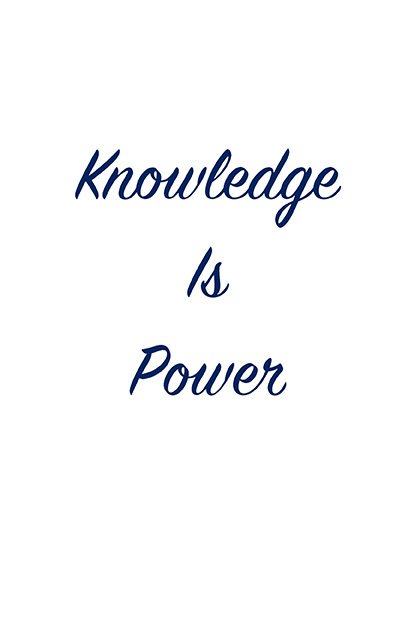
Its easy in any kind of conversation about genderor any other sort of identityto become overwhelmed by everything that is wrong: the microaggressions, the biases, the iniquities, the violence. As our eyes open and our brains wrap themselves around a new way of seeing that means judging things we used to take for granted. For a time, its all we can see. Yet its just as important to be able to see the other side of the coin: The forward thinking, the brilliantly disruptive, the visionary and the opportunities around us to create something new, and to use what we know to make that new world better.
Critique is vital. And knowledge is power. But power also means being able to imagine a different world and to share that vision with others. If all we can see and share are the wrongs were subject to, that can become as ultimately disempowering as not acknowledging them at all.
By all means, see whats wrong and say it loud. But dont forget to use that knowledge, however terrible, to give yourself a chance of something better, and to lead your community that way, too.
THE TRIPLE THREAT: SEXUAL PLEASURE, WOMEN, AND BIKE SEATS, FROM THE 1890S TO TODAY
Samantha Brennan
W hat do cycling and philosophy have in common?
Its a rather sad fact that two activities that make up a big part of my identity are heavily male dominated. Its not just a numbers thing. Its also that normative ideals of the cyclist and the philosopher are both gendered male in ways that make it hard for women to fit in and to count as philosophers and as cyclists. Im interested in the historical connection between women, bicycles, and feminismbut my focus is really on the worry that womens bodies are unsuitable for riding, an attitude that formed part of the backlash to early feminism and one that I think carries forward today.
As the womens movement and the womens cycling movement gained traction, setting the New Woman on her course, there was considerable opposition to womens riding. Clearly, cycling was unladylike. There are many published speeches by clergy against the spectacle posed by women on bikes. Other clergy worried that access to transportation would make it easier for women to give into our baser natures and undertake morally loathsome activities, including prostitution and infidelity. I love the idea that womens sexuality is so wild and so corrupt that only lack of reliable transportation keeps us chaste and faithful. My favorite clergy quote, however, admits that cycling isnt always a bad thing: The mere act of riding a bicycle is not in itself sinful and if it is the only means of reaching the church on a Sunday, it may be excusable. (1885)
Much more interesting from a philosophical point of view is the medical condemnation of womens cycling. Many physicians held that womens bodies simply werent suited to cycling. The bicycle was a sure path to sexual depravity (given the motion of the bike and the proximity of the seat to womens genitals) and infertility (given the shaking the womb obviously endures while riding a bike). Also, our weaker natures made us prone to exhaustion. In The hidden dangers of cycling, A. Shadwell, M.D, (1897) advised women against attempting a novel and peculiar experiment with their precious persons. He wrote that the risks of cycling include internal inflammation, exhaustion, bicycle face, appendicitis, dysentery, and nervous attacks.


